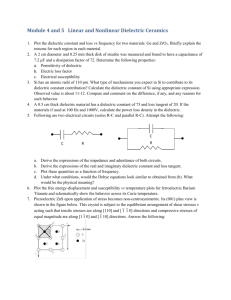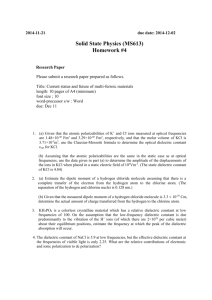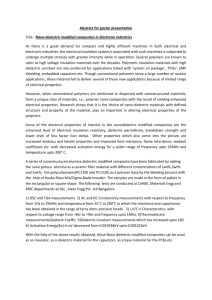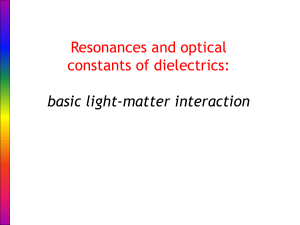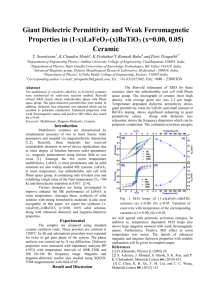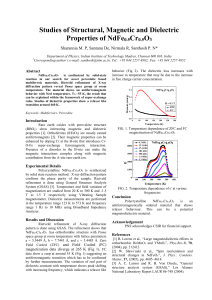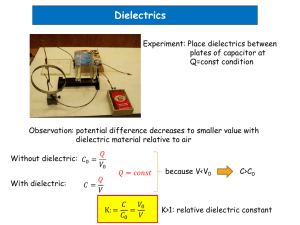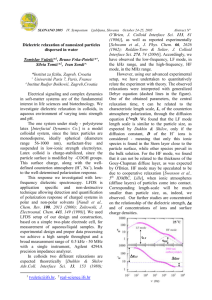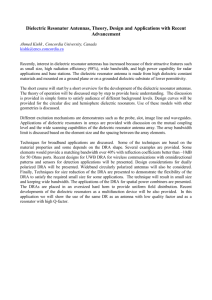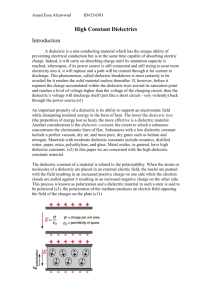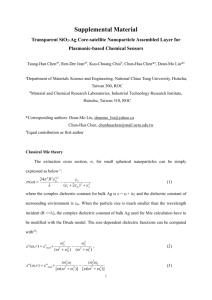Nano Changes Rise To Macro Importance In A Key Electronics
advertisement
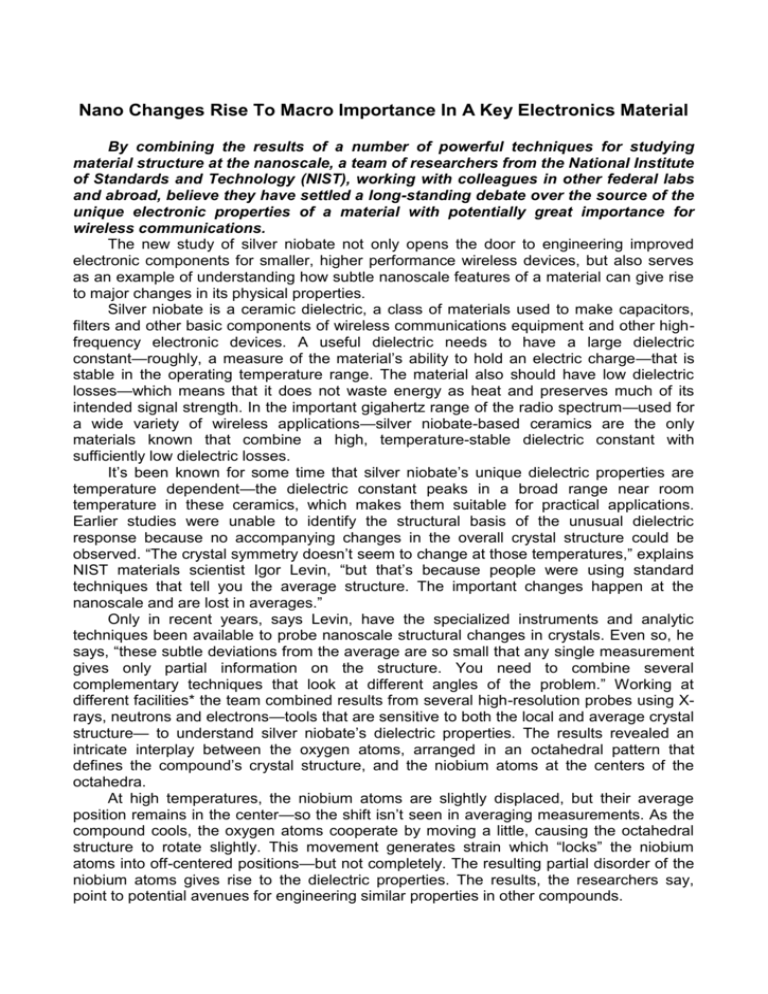
Nano Changes Rise To Macro Importance In A Key Electronics Material By combining the results of a number of powerful techniques for studying material structure at the nanoscale, a team of researchers from the National Institute of Standards and Technology (NIST), working with colleagues in other federal labs and abroad, believe they have settled a long-standing debate over the source of the unique electronic properties of a material with potentially great importance for wireless communications. The new study of silver niobate not only opens the door to engineering improved electronic components for smaller, higher performance wireless devices, but also serves as an example of understanding how subtle nanoscale features of a material can give rise to major changes in its physical properties. Silver niobate is a ceramic dielectric, a class of materials used to make capacitors, filters and other basic components of wireless communications equipment and other highfrequency electronic devices. A useful dielectric needs to have a large dielectric constant—roughly, a measure of the material’s ability to hold an electric charge—that is stable in the operating temperature range. The material also should have low dielectric losses—which means that it does not waste energy as heat and preserves much of its intended signal strength. In the important gigahertz range of the radio spectrum—used for a wide variety of wireless applications—silver niobate-based ceramics are the only materials known that combine a high, temperature-stable dielectric constant with sufficiently low dielectric losses. It’s been known for some time that silver niobate’s unique dielectric properties are temperature dependent—the dielectric constant peaks in a broad range near room temperature in these ceramics, which makes them suitable for practical applications. Earlier studies were unable to identify the structural basis of the unusual dielectric response because no accompanying changes in the overall crystal structure could be observed. “The crystal symmetry doesn’t seem to change at those temperatures,” explains NIST materials scientist Igor Levin, “but that’s because people were using standard techniques that tell you the average structure. The important changes happen at the nanoscale and are lost in averages.” Only in recent years, says Levin, have the specialized instruments and analytic techniques been available to probe nanoscale structural changes in crystals. Even so, he says, “these subtle deviations from the average are so small that any single measurement gives only partial information on the structure. You need to combine several complementary techniques that look at different angles of the problem.” Working at different facilities* the team combined results from several high-resolution probes using Xrays, neutrons and electrons—tools that are sensitive to both the local and average crystal structure— to understand silver niobate’s dielectric properties. The results revealed an intricate interplay between the oxygen atoms, arranged in an octahedral pattern that defines the compound’s crystal structure, and the niobium atoms at the centers of the octahedra. At high temperatures, the niobium atoms are slightly displaced, but their average position remains in the center—so the shift isn’t seen in averaging measurements. As the compound cools, the oxygen atoms cooperate by moving a little, causing the octahedral structure to rotate slightly. This movement generates strain which “locks” the niobium atoms into off-centered positions—but not completely. The resulting partial disorder of the niobium atoms gives rise to the dielectric properties. The results, the researchers say, point to potential avenues for engineering similar properties in other compounds. The work was supported in part by the U.S. Department of Energy and the U.K. Science and Technology Facilities Council. *The study required measurements at the Advanced Photon Source at Argonne National Laboratory, the Lujan Neutron Center at Los Alamos National Laboratory and the ISIS Pulsed Neutron and Muon Source at Rutherford Appleton Laboratory (United Kingdom). In addition to NIST, researchers from Argonne, Los Alamos, ISIS and the University of Sheffield contributed to the paper.
